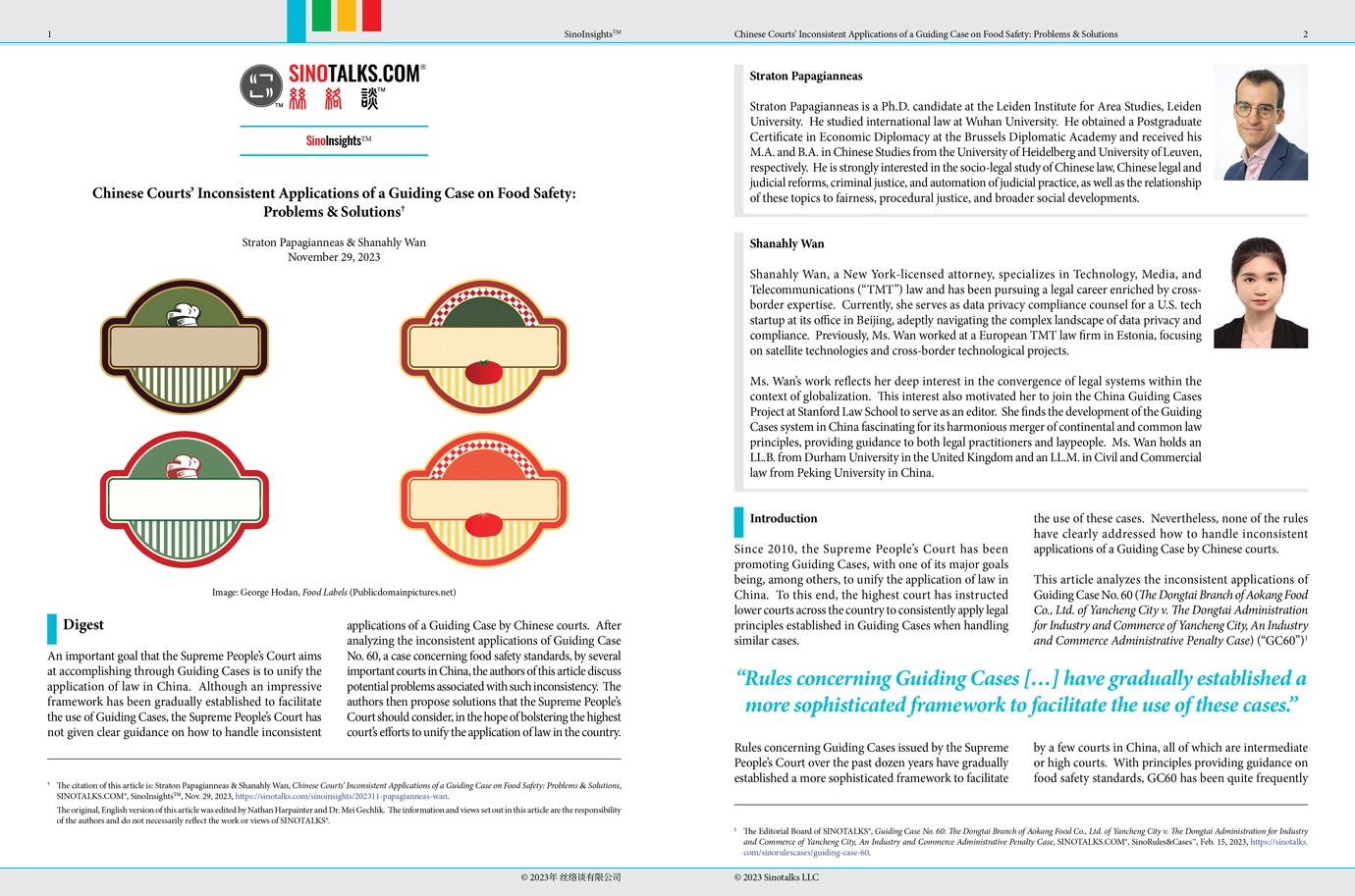Chinese Courts’ Inconsistent Applications of a Guiding Case on Food Safety:
Problems & Solutions†
Table of Contents
- Digest
- Introduction
- A Major Limitation in the Rules on Guiding Cases
- Guiding Case No. 60
- Inconsistent Applications of Guiding Case No. 60
- Problems Associated with Inconsistent Applications of Guiding Case No. 60
- Solutions & Concluding Remarks
Number of Words
- Approximately 8000

Digest
An important goal that the Supreme People’s Court aims at accomplishing through Guiding Cases is to unify the application of law in China. Although an impressive framework has been gradually established to facilitate the use of Guiding Cases, the Supreme People’s Court has not given clear guidance on how to handle inconsistent applications of a Guiding Case by Chinese courts. After analyzing the inconsistent applications of Guiding Case No. 60, a case concerning food safety standards, by several important courts in China, the authors of this article discuss potential problems associated with such inconsistency. The authors then propose solutions that the Supreme People’s Court should consider, in the hope of bolstering the highest court’s efforts to unify the application of law in the country.
Introduction
[…]
“Rules concerning Guiding Cases […] have gradually established a more sophisticated framework to facilitate the use of these cases.”
A Major Limitation in the Rules on Guiding Cases
[…]
Guiding Case No. 60
[…]
Inconsistent Applications of Guiding Case No. 60
[…]
“[…] food labels and food safety standards have become commonly encountered legal issues, and [Guiding Case No. 60], which helps address these issues, has been cited in a significant number of court cases.”
1. Fact Patterns and Legal Issues
[…]
2. Approach One
[…]
3. Approach Two
[…]
Problems Associated with Inconsistent Applications of Guiding Case No. 60
[…]
“Such inconsistent applications of [Guiding Case No. 60] could lead to problems in practice. Two simple scenarios can help shed light on the problems […].”
Solutions & Concluding Remarks
[…]
† The citation of this article is: Straton Papagianneas & Shanahly Wan, Chinese Courts’ Inconsistent Applications of a Guiding Case on Food Safety: Problems & Solutions, SINOTALKS.COM®, SinoInsights™, Nov. 29, 2023, https://sinotalks.com/sinoinsights/guiding-cases-food-safety.
The original, English version of this article was edited by Nathan Harpainter and Dr. Mei Gechlik. The information and views set out in this article are the responsibility of the authors and do not necessarily reflect the work or views of SINOTALKS®.










